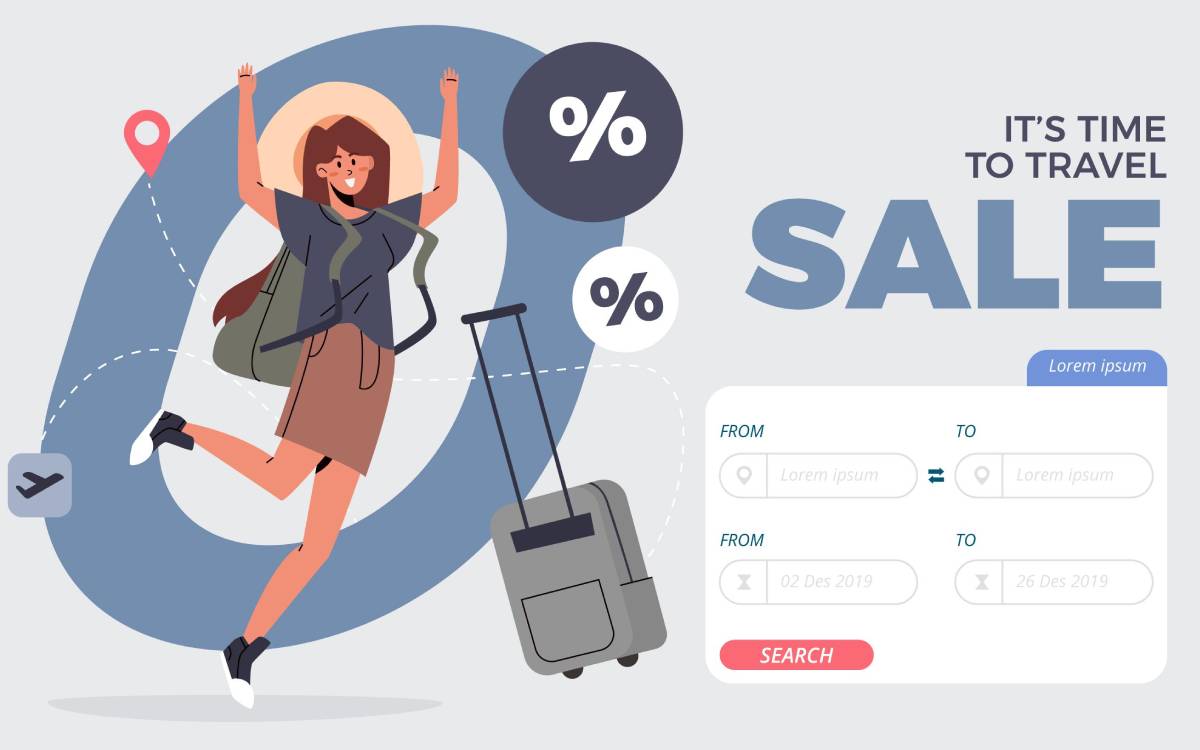Securing the best flight deals in 2024 necessitates a strategic approach, keen awareness of market trends, and the judicious use of technology. Whether you are a seasoned traveler or planning your first big adventure, these tips will help you navigate the complexities of airline pricing and ensure you get the most value for your money.
1. Flexible Travel Dates
One of the most effective strategies for finding the best flight deals is maintaining flexible travel dates. Airlines often have fluctuating prices depending on the day of the week, time of year, and upcoming holidays. Typically, mid-week flights, such as those on Tuesdays and Wednesdays, tend to be cheaper due to lower demand. Similarly, flying during off-peak seasons—such as the shoulder months of spring and autumn—can result in significant savings. If your schedule allows for flexibility, you can adjust your travel plans to take advantage of these lower prices.
2. Flight Comparison Websites
Utilizing flight comparison websites is another indispensable tactic. Websites such as Skyscanner, Kayak, and Google Flights aggregate fares from multiple airlines, providing a comprehensive overview of available options. These platforms allow users to compare prices, check alternative routes, and set up alerts for fare changes. By leveraging these tools, travelers can ensure they are getting the best possible deal on their flights.
3. Set Fare Alerts
Setting fare alerts is a proactive way to stay on top of fluctuating prices. Many flight comparison websites and airline apps offer this feature. By entering your preferred travel dates and destinations, you will receive notifications when prices drop. This method allows you to monitor fare trends and book when prices are at their lowest, thus maximizing your savings.
4. Book in Advance
While last-minute deals can occasionally offer significant savings, the general rule of thumb is to book flights well in advance. For domestic flights, purchasing tickets one to three months ahead of time is optimal. For international travel, booking six months in advance is advisable. Airlines typically release their cheapest seats first, meaning early planners often secure the lowest fares.
5. Consider Nearby Airports
Flying into or out of nearby airports rather than the primary ones in a major city can lead to substantial savings. Smaller or secondary airports often have lower landing fees, which can translate into cheaper ticket prices. Additionally, these airports may offer a more relaxed travel experience with shorter lines and less congestion. When planning your trip, check if an alternate airport serves your destination and compare the fares.
6. Frequent Flyer Programs
Enrolling in frequent flyer programs is an excellent way to accumulate miles that can be redeemed for free or discounted flights. Many airlines offer loyalty programs that reward regular travelers with points for every flight. These points can be used to book future travel, upgrade seats, or access exclusive perks. Additionally, pairing your frequent flyer membership with a travel credit card that offers bonus miles on purchases can expedite the accumulation of rewards.
7. Incognito Mode
When searching for flights online, use incognito mode or clear your browser cookies to avoid price hikes. Airline websites and travel search engines often use cookies to track your search history. This can lead to a phenomenon where repeatedly searching for the same flight results in increasing prices. By browsing in incognito mode, you prevent websites from tracking your activity, ensuring you see the most current prices.
8. Budget Airlines
While full-service carriers offer a range of amenities, budget airlines can provide significant savings for those willing to forego certain luxuries. Low-cost airlines such as Ryanair, EasyJet, and Southwest Airlines offer competitive fares, especially for short-haul flights. Be mindful of additional fees for services like checked baggage, seat selection, and in-flight meals, and factor these into the total cost of the flight.
9. Connecting Flights
Booking connecting flights instead of direct ones can often result in lower fares. While direct flights offer convenience, connecting flights can provide substantial savings. Consider layovers in secondary cities or regions where air traffic is less congested. This approach requires more planning and flexibility but can significantly reduce the cost of travel.
10. Monitor Social Media and Newsletters
Following airlines on social media and subscribing to their newsletters can keep you informed about special promotions and flash sales. Airlines frequently use these channels to announce limited-time offers and discounts. Being in the know can provide a competitive edge, allowing you to snag deals before they disappear.
11. Use Points and Miles Wisely
Strategically using points and miles can optimize the value you get from frequent flyer programs and travel credit cards. Understand the best ways to redeem your points, whether for flights, upgrades, or other travel-related expenses. Occasionally, airlines offer promotions where points have increased value, so staying informed about such opportunities can enhance your travel savings.
12. Shoulder Seasons
Flying during shoulder seasons—the periods just before or after peak travel times—can offer the best of both worlds: good weather and lower prices. For instance, traveling to Europe in late spring (April to June) or early autumn (September to October) can help you avoid the summer crowds and high costs while still enjoying pleasant weather.
13. Credit Card Rewards
Many credit cards offer rewards programs that can significantly offset travel expenses. Cards with travel rewards often provide points or miles for every dollar spent, which can then be redeemed for flights, hotel stays, and other travel-related costs. Additionally, some credit cards offer sign-up bonuses that can cover the cost of a flight if certain spending thresholds are met.
14. Avoid Peak Periods
Avoiding peak travel periods such as major holidays, school vacations, and long weekends can help you secure lower fares. During these times, demand is high, and airlines often increase prices. If your schedule allows, plan your trips outside these peak periods to take advantage of more affordable flights.
15. Alternative Routes
Exploring alternative routes can sometimes yield cheaper fares. Instead of flying directly to your destination, consider booking flights with stopovers or open-jaw tickets (flying into one city and out of another). This strategy can not only reduce costs but also provide an opportunity to explore additional destinations along the way.
16. Airline Alliances
Airline alliances such as Star Alliance, OneWorld, and SkyTeam allow passengers to earn and redeem miles across multiple carriers. By understanding airline alliances and their networks, you can take advantage of more flexible routing options and potentially lower fares. Booking with partner airlines can also open up additional benefits, such as access to premium lounges and priority boarding.
17. Quick Booking
When a good deal appears, it is essential to book quickly. The best fares often don’t last long, and hesitation can mean missing out on significant savings. Having a travel plan in mind and being ready to finalize your booking at a moment’s notice can ensure you secure the best deals available.
By incorporating these strategies into your flight-booking routine, you can significantly reduce your travel expenses and make the most of your journey. Whether you are a frequent flyer or an occasional traveler, these tips offer practical ways to enhance your travel experience without breaking the bank. The landscape of airfare pricing is complex, but with these top tips, you are well-equipped to find the best flight deals in 2024.










